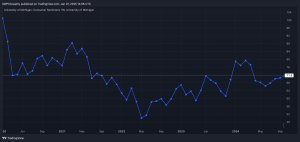After inflation took the economy for a spin, a lot of savers have discovered the essential benefits of having a passive income. A few extra hundred pounds in the bank each month may not unlock a life of luxury. However, it can still drastically reduce financial pressure on households, especially for those no longer earning income from employment.
Luckily, by investing in the stock market today, investors can start building their future passive income streams. So with that in mind, let’s explore how to get the ball rolling with just £5,000 of starting capital.
Crunching the numbers
So, £500 a month translates into a total annual passive income of £6,000. And by applying the 4% rule, that means an investor would need a portfolio worth approximately £150,000.
That’s 30 times more than £5,000. However, as fanciful as earning a 3,000% return may sound, there are various strategies investors can use.
Let’s start with the riskier approach – penny stocks. By investing in these tiny businesses, the potential returns can be enormous and far greater than just 3,000%. And we have seen several success stories of penny stocks rising to deliver explosive returns.
Unfortunately, for every success story, there are about a hundred failures. And in most cases, penny stocks rarely live up to expectations, delivering nothing but volatility and losses. As I said, it’s the riskier option. However, there’s another method.
Instead of trying to earn a 3,000% return in a short time frame, investors can plan ahead and stretch this out over the long run. Leveraging index funds may not sound as exciting. But they’re excellent instruments for replicating index returns which, over the long run, have headed in one direction – up.
Looking at the FTSE 100 and FTSE 250, over the last 30 years, investors have reaped between 8% and 11% in annualised returns. Five grand invested at this rate would deliver the £500 passive income target within just over 30 years. And if an extra £100 of capital were thrown in each month, this journey could be shortened by over a decade.
Index funds vs stock picking
As powerful as index funds can be, they’re far from a perfect wealth-building instrument. Most critically, they make it impossible to achieve market-beating returns. That’s where stock picking has the upper hand.
This investing strategy requires a lot more dedication, skill, and risk tolerance. However, if successful, it opens the door to far superior returns that can significantly amplify a passive income stream.
Take Ashtead Group (LSE:AHT) as an example. Today, it’s one of the most dominant equipment rental businesses in the UK and is quickly rising up the ranks in the US and Canada. But 20 years ago, the firm had yet to rise to industry dominance. And investors who spotted the shifting trend from equipment ownership to rental early, like Ashtead’s management team did, saw a terrific growth opportunity before the crowd.
As a result, since 2004, shareholders have reaped a staggering 27.3% annualised return. That’s enough to shorten the time to earn a £500 monthly passive income to just over 10 years. With so much growth already under its belt, the days of delivering near-30% returns seem likely over for new investors in Ashtead. But there are plenty of other Ashtead-like stocks waiting to be discovered right now.
This post was originally published on Motley Fool







